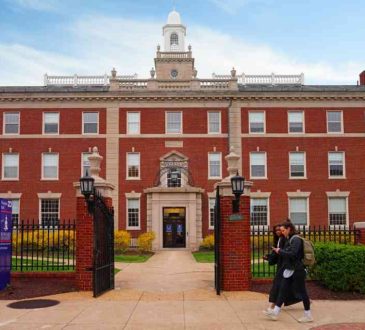How CEOs can avoid the Central Bank Trap

We live in strange times. In the past eight years the US has created more money than in the previous fifty years combined, and at the same time interest rates have never been so low. However, total real gross investment in the OECD as a whole only returned to the pre-crisis level by 2014 and remains sluggish at best. In the same period, companies have been increasing cash flow generation and dividends and buy-backs have soared.
Why is this happening?
Welcome to financial repression. Extreme liquidity and zero interest rates policies have come with a nasty addition. Tax burden. Not only price and value of money has been artificially distorted, but the tax burden in the OECD is at all-time highs.
Financial repression is achieving the opposite of what it intends to create. The mainstream economists will tell you that lowering interest rates and massively increasing liquidity will push economic agents to take more risk, consume more and invest long term. But it does not happen as expected. Companies are more prudent in their investment criteria, and families actually save more, increasing their deposits. Economic agents perceive there is something odd in the economy, even if they are not experts, and become more prudent in the face of what is clearly a distorted cost and value of money. The central bank trap, which I discuss in my latest book.
The fact is that financial repression in the past eight years has resulted in one of the largest transfers of wealth from families and businesses into government since the Bretton Woods agreement, $1.5 trillion in new taxes in the US added to $9 trillion of new debt and $4.7 trillion of monetary stimulus. This, in turn, has driven a weak recovery.
A CEO today should be excited.
The opportunities that the central bank trap has generated are enormous.
First, expensive acquisitions made by others lured by the liquidity trap will become the exciting value opportunities for the prudent CEO that has avoided falling into the mirage of cheap debt. In the past two years, takeover targets have sold for a median of 11 times Ebitda, according to Bloomberg, whereas the multiple was only about 7-9 times up until then. Transactions are getting ever-bigger and more expensive, pushing total goodwill to $6.9 trillion. I believe that the sobering factor of tighter monetary policies, added to the reality of challenges in the economy, will generate extremely attractive acquisition opportunities when the bubble bursts. Of course, some CEOs have been very prudent making bolt-on acquisitions while preserving cash and strengthening the balance sheet, and some multiples are justified by realistic growth estimates, but many of the acquisitions that rose in multiples only due to cheap money and low rates will be the write-downs for some, and subsequent opportunities for the prudent manager.
Second, prudent CEOs have been right focusing on total shareholder return via dividends and buybacks in a period of weak growth and increased uncertainty. This has led to a historic high level of cash preservation and a clear mentality of focusing on return on invested capital. For a CEO, correct capital allocation is the main concern, and what better capital allocation than dividends and its own shares if there are no evident growth opportunities elsewhere? This period has seen an unprecedented decline in interest rates, but any CEO knows that perpetuation of overcapacity and large imbalances have also meant that the weighted average cost of capital (WACC) of most industries has not fallen. Instead, WACC has increased globally due to the poor growth and higher risk attached to the equity part of the equation. Therefore, the prudent CEO will not take this rise in WACC as an anomaly, or ignore it, but understand why equity risk premium rises –uncertainty on future estimates, constant downgrades from international agencies of their expectations-. As such, a prudent CEO will analyze capital allocation opportunities with the view of preserving the value of his or her company, while placing investments in areas where conservative estimates allow a comfortable return on invested capital above its WACC. This strategy will help the CEO navigate an uncertain world where economic cycles have become shorter and more abrupt, as I explain in my book. There is no need to stop investing, rather the opposite, just analyze opportunities that enhance value while keeping a firm eye on shareholder return. We are seeing an improvement in growth and inflation estimates globally in 2017, but we need to pay attention as well to the imbalances that come with those expectations: Perpetuation of overcapacity, higher debt and higher taxes.
Third, CEOs should be excited about the opportunities that digitalization and robots offer. We are moving towards an age where there are lower capital requirements to deliver stronger earnings growth and efficiency and productivity will likely soar. Embracing change and leading the process is a critical element for CEOs to succeed. Another important recommendation to escape the central bank trap is to lead this change looking at higher innovation and investment in research and development. The biggest mistake a CEO can make in this environment is to follow the trap and increase spending disproportionately on subsidized areas or rent-seeking businesses. Low interest rates and high liquidity might lure many to poor productivity sectors, but these are the ones that will suffer the most when the tide turns, and it does. However, high value-added, superior productivity, technology differentiated companies with strong brands will not only gain market share and value, but thrive in complex economic cycles.
Most CEOs have behaved impeccably in this zero-interest-rate, massive liquidity environment. They have ignored the dangerous siren call to take excess risk and more debt and have focused on strengthening the value of their companies while reducing imbalances and creating an environment for a better, more sustainable growth model.
 Central planners may be angry to see that most companies did not follow their incentive to overspend and take more debt. But no government or central bank committee has more or better information about where and how to invest than CEOs and their teams. It is easy to “demand” more investment from companies when the person doing so has no skin in the game. Now, the evidence is clear. The majority of CEOs did the right thing.
Central planners may be angry to see that most companies did not follow their incentive to overspend and take more debt. But no government or central bank committee has more or better information about where and how to invest than CEOs and their teams. It is easy to “demand” more investment from companies when the person doing so has no skin in the game. Now, the evidence is clear. The majority of CEOs did the right thing.
Now it is time to look at the future forgetting artificial monetary mirages and demand-side policies. The successful and prudent CEO will adapt and lead change focusing on productivity, technology and added value. And will reap the benefits of absorbing those that believed in growth by government decree and the illusion of the monetary laughing gas mirage.
The future belongs to those CEOs that focus on real fundamental trends and ignore the central bank trap.
Have you read?
Daniel Lacalle is the author of “Escape from the Central Bank Trap” (2017, BEP) ,“Life In The Financial Markets” (Wiley, 2014) and “The Energy World Is Flat” (Wiley, 2014, with Diego Parrilla).
Bring the best of the CEOWORLD magazine's global journalism to audiences in the United States and around the world. - Add CEOWORLD magazine to your Google News feed.
Follow CEOWORLD magazine headlines on: Google News, LinkedIn, Twitter, and Facebook.
Copyright 2025 The CEOWORLD magazine. All rights reserved. This material (and any extract from it) must not be copied, redistributed or placed on any website, without CEOWORLD magazine' prior written consent. For media queries, please contact: info@ceoworld.biz











